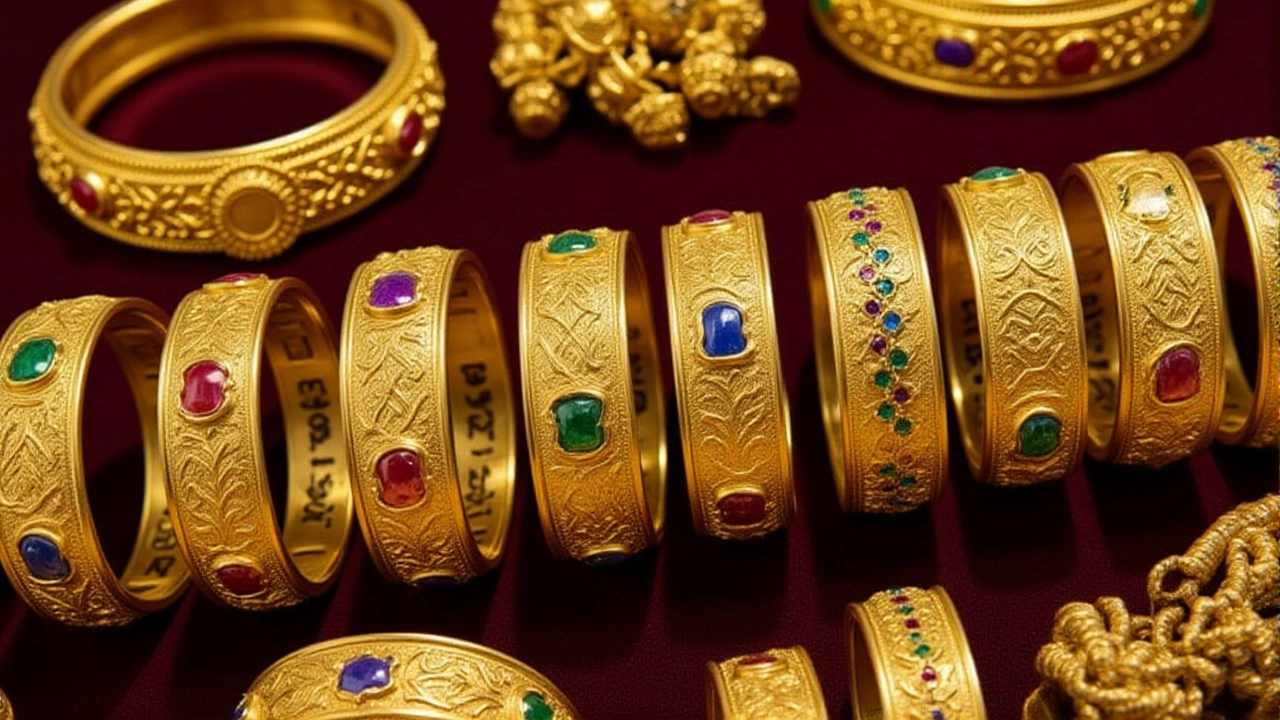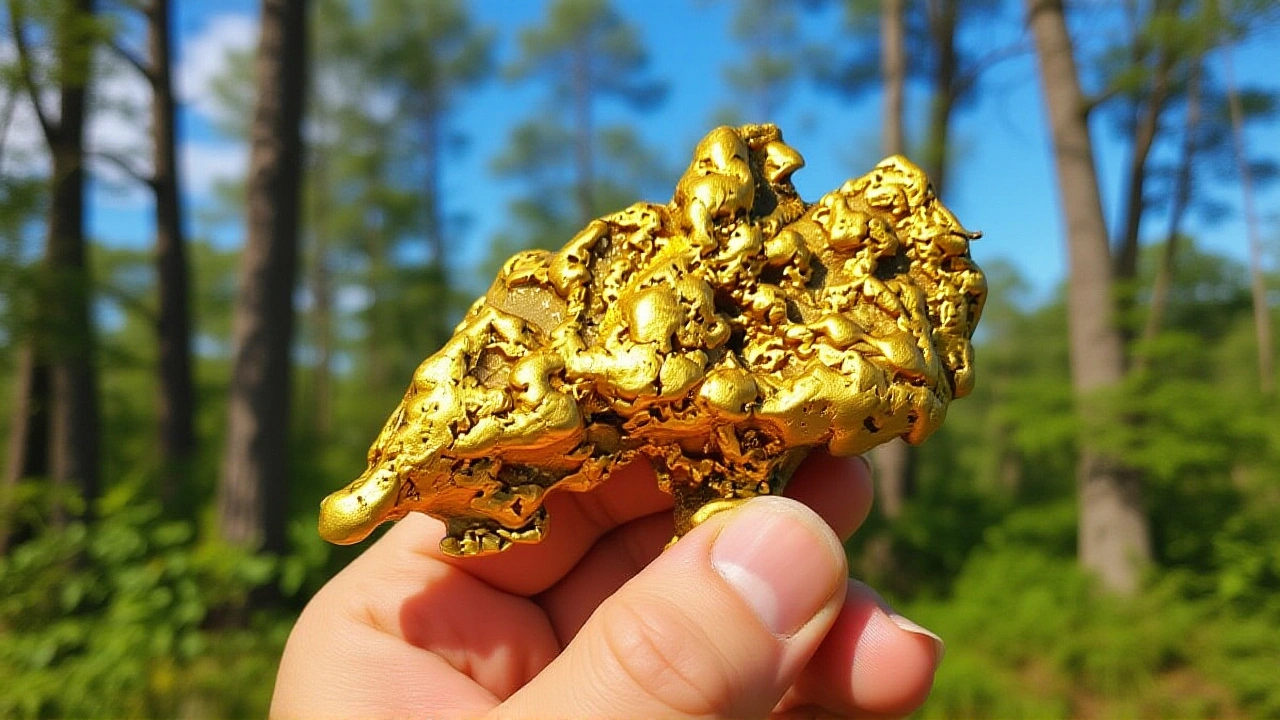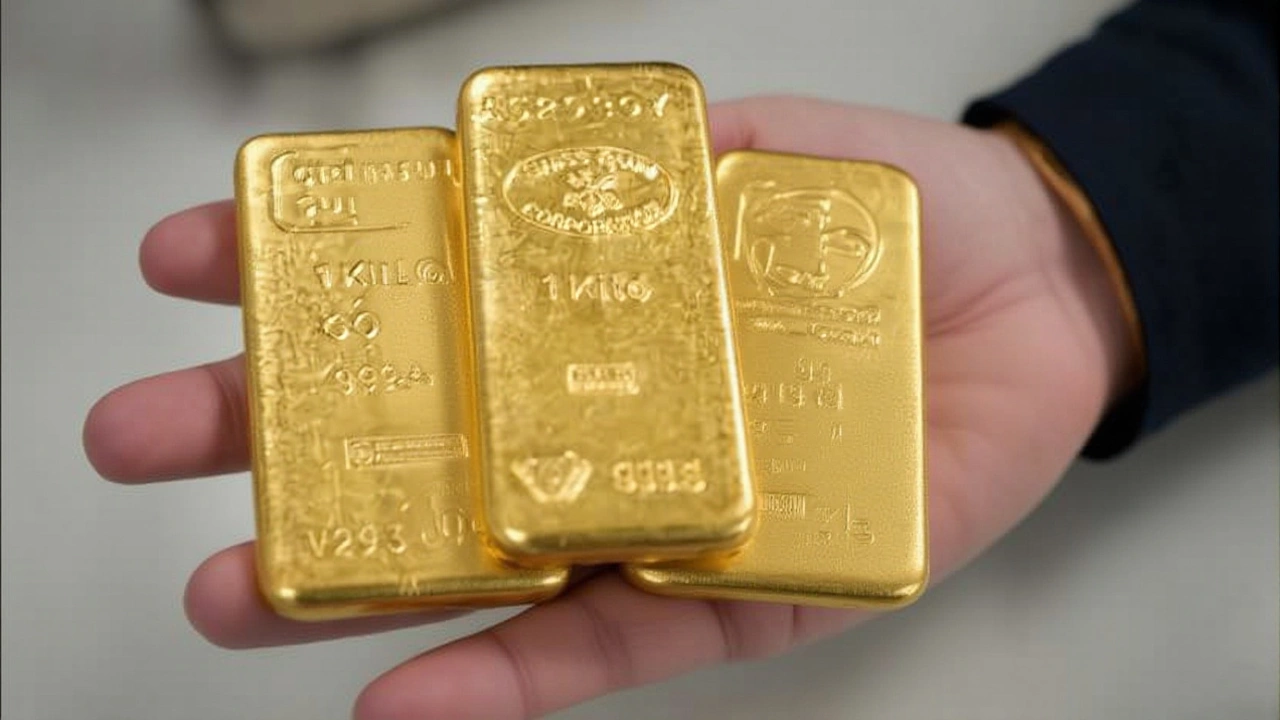Gold Tops $4,000/Oz: What the Surge Says About the U.S. Economy
 Oct, 9 2025
Oct, 9 2025
When FactSet, a New York‑based market‑data firm, reported that gold hit $4,078 an ounce on Oct. 8, 2025, the number felt like a seismic shift for investors who’d been watching an otherwise soaring U.S. economy.
The record‑setting trade happened at about 1:07 PM UTC, making gold the first metal ever to breach the $4,000 barrier. Bret Kenwell, Investment Analyst at eToro U.S., summed it up in an email: “$4,000 an ounce seemed far‑fetched at the start of the year, but after a ~50% rally, here we are.”
Historical backdrop: Gold’s role in crises
Gold has long been a panic button for markets. During the 1970s stagflation, it leapt from $35 to $850 per ounce. In the 2008‑09 financial collapse, it up 25% while the S&P 500 fell 38%.
What makes 2025 odd is that the backdrop is anything but a crisis. The Dow topped 45,000 points, GDP grew at a 3.8% annualized pace in Q3, and consumer‑price inflation held at 2.8% YoY, per the Bureau of Economic Analysis. Traditionally, such conditions mute gold’s shine.
Today's breakout: Numbers and market reaction
FactSet’s data shows a 53.142% year‑to‑date rally from $2,800 on Jan. 1 to $4,078 on Oct. 8. That outpaces the S&P 500’s 15% gain in the same span.
In the instant after the price crossed the line, 347 automated trading algorithms fired across the London Bullion Market Association, Shanghai Gold Exchange, and COMEX, pushing derivative volumes to $2.8 billion, according to the Bank for International Settlements.
- Current spot: $4,078/oz
- YTD change: +53.1%
- Gold volatility (GVZ): 12.7% annualized
- Bid‑ask spread on 1‑gram bars: ~10.5% premium
- Central‑bank gold reserves value gain: ~$728 billion
Heavier physical formats, like American Eagle coins minted at the West Point New York Mint, command a 7.8% premium over spot, while 1‑gram bars sit near 10.5%.

Why investors are flocking despite a booming economy
Bloomberg Intelligence tracked 127 Wall Street firms; 89% cited “growing unease over U.S. political stability” as the spark. The unease stems from a government shutdown that began Sept. 30 over a health‑care standoff between the Biden administration and House Republicans, and a controversial Oct. 5 White House meeting that featured former President Donald Trump and self‑identified antifa representatives.
“Gold is perceived as a safe‑haven, but the volatility of 10‑15% can bite,” warned Staunovo, a commodities research specialist at TradeWeb Markets Inc.. He added that physical gold’s wider spreads make entry tougher for retail investors with under $10,000 to allocate.
Institutionally, Greenwich Associates surveyed 68% of large investors on Oct. 7 saying they now hold 7‑12% of portfolios in gold, a jump from the historic 3‑5% range.
Implications for miners, central banks, and retail buyers
With an estimated $1.2 trillion of unrealized gains across global gold holdings, miners have felt the boost too. Barrick Gold Corp. (Toronto) and Newmont Corporation (Denver) saw stock price jumps of roughly 61% YTD.
Retail jewelers aren’t left out. Tiffany & Co., owned by LVMH, reported a 22% surge in gold‑product sales in Q3.
Central banks hold about 35,000 metric tons of gold, with the U.S. Federal Reserve vaults at 33 Liberty Street accounting for a third. Their holdings alone have gained $728 billion since the start of the year.

Looking ahead: Forecasts and risks
Analysts at 98 of the 113 firms linking the rally to politics project the price could touch $4,500 by year‑end, a roughly 10% upside from today’s level.
But Staunovo sounded a note of caution: “With volatility at 10‑15%, we could see a retreat to $3,600 within 30 trading days if market sentiment flips.” The CBOE Gold Volatility Index (GVZ) peaked at 24.7, mirroring heightened anxiety.
In short, the gold market is now a barometer not just of inflation or currency moves, but of Washington’s ability to keep the political lights on. As long as that uncertainty lingers, the metal may stay aloft—even while the stock market climbs higher than ever.
Frequently Asked Questions
How does the gold surge affect small investors?
Retail investors with under $10,000 face higher entry costs because physical gold—especially 1‑gram bars—carries a 10‑15% premium over spot. However, exchange‑traded ETFs let them gain exposure without the premium, albeit with lower upside potential.
What led to gold crossing $4,000 for the first time?
A mix of political turbulence—a government shutdown and a polarizing White House meeting—combined with traditional safe‑haven buying, pushed investors into gold despite a booming economy, driving the price to $4,078 on Oct. 8, 2025.
Which sectors stand to gain most from the rally?
Mining giants like Barrick Gold and Newmont saw shares jump about 61% YTD, and luxury jewelers such as Tiffany & Co. reported a 22% sales lift. Central banks also see a boost in the balance‑sheet value of their reserves.
What are the risks of a continued gold climb?
Volatility remains high (10‑15%). A sudden shift in political sentiment or a sharp market correction could drive prices down to $3,600 within a month, erasing recent gains.
How might the Federal Reserve respond?
The Fed could keep interest rates steady, as higher rates usually dampen gold demand. Any move toward tightening to combat inflation, however, might further boost gold as a hedge.